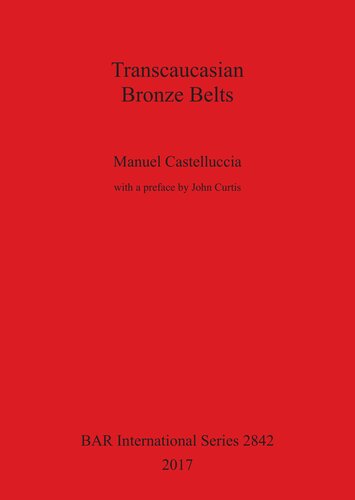

Most ebook files are in PDF format, so you can easily read them using various software such as Foxit Reader or directly on the Google Chrome browser.
Some ebook files are released by publishers in other formats such as .awz, .mobi, .epub, .fb2, etc. You may need to install specific software to read these formats on mobile/PC, such as Calibre.
Please read the tutorial at this link: https://ebookbell.com/faq
We offer FREE conversion to the popular formats you request; however, this may take some time. Therefore, right after payment, please email us, and we will try to provide the service as quickly as possible.
For some exceptional file formats or broken links (if any), please refrain from opening any disputes. Instead, email us first, and we will try to assist within a maximum of 6 hours.
EbookBell Team

0.0
0 reviewsThe present work catalogues and analyses the so-called 'bronze belts' - thin metal plaques, decorated or not - that represent one of the main features of the material culture of the native peoples of the Caucasus area during the Iron Age. Given the amount of material examined, the research has been divided into two parts. The first part is devoted to the study of the belts themselves, their art and style. The second part offers a summary of the archaeological contexts of their recovery. Each site is described by its overall features, followed by a more detailed analysis of the context of provenance of each indivdual belt, represented in most cases by funerary evidence. For each of these burials the set of objects associated with the deceased is laid out in full detail. From the preface by John Curtis'In this pioneering study Manuel Castelluccia has collected together about 350 sheet bronze belts that were found mostly in graves in the South Caucasus region or Transcaucasia (Armenia, Azerbaijan, Georgia and South Ossetia)...This work is particularly valuable in that nearly all the belts are now in museums in the former Soviet Union or are known only through publications in Russian, Georgian and Armenian, so for the first time this large body of material is made available to western scholars...This exemplary catalogue will be compulsory reading and a standard work of reference for all scholars interested in the archaeology of Transcaucasia.'